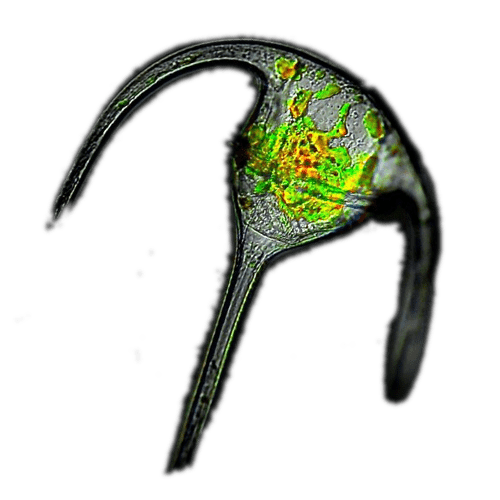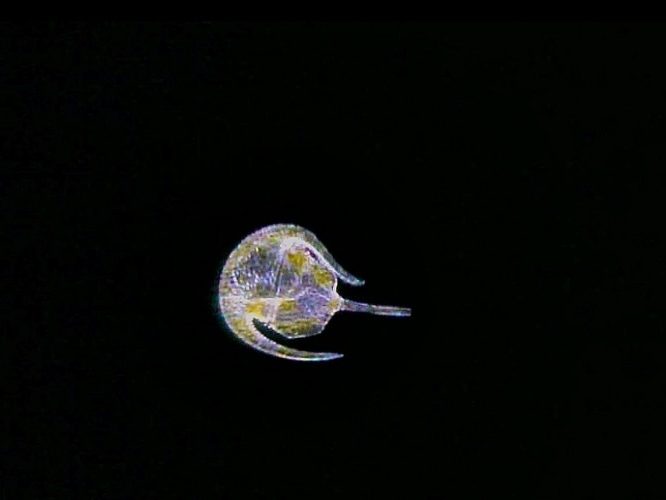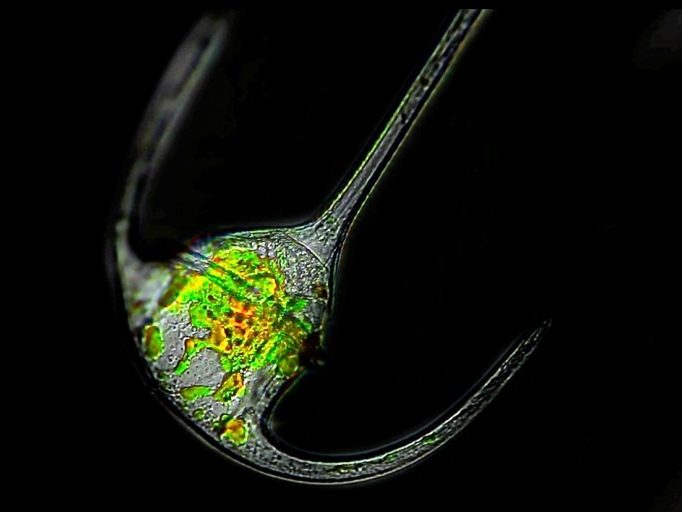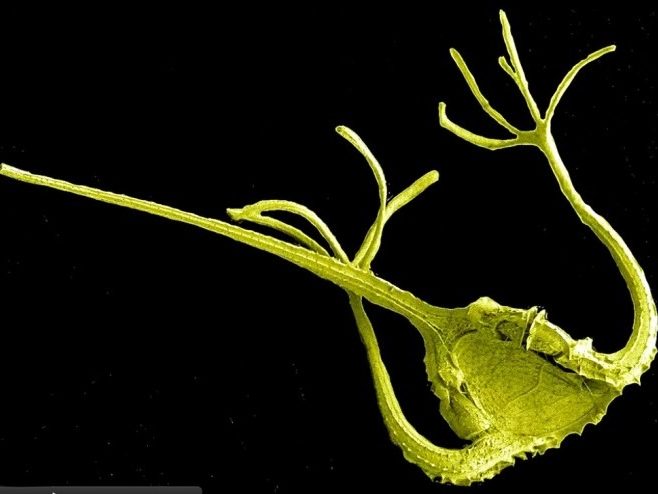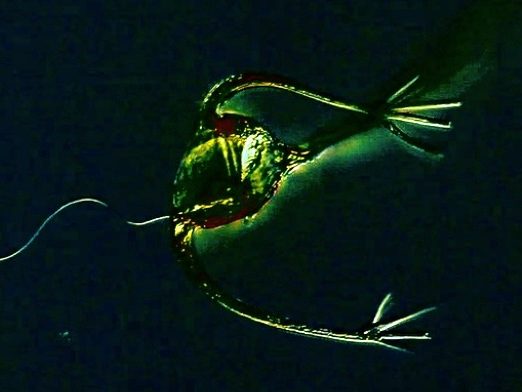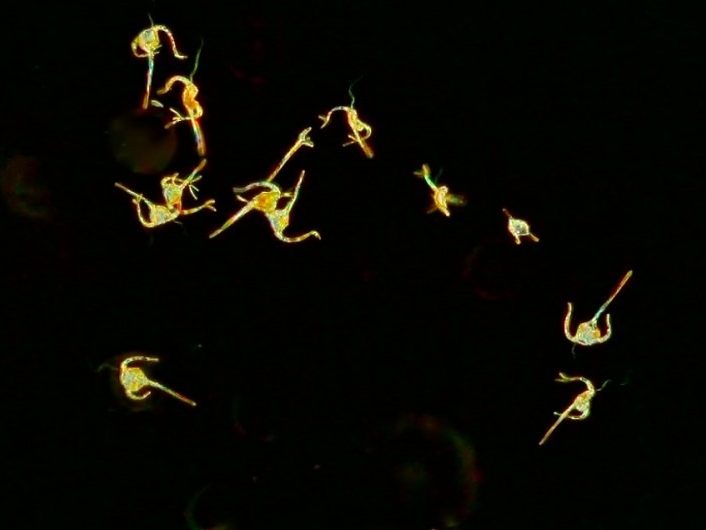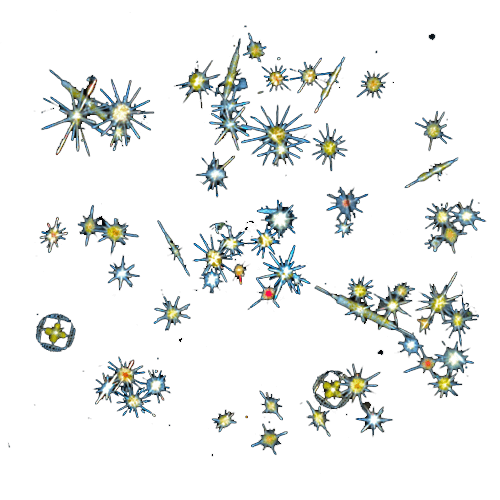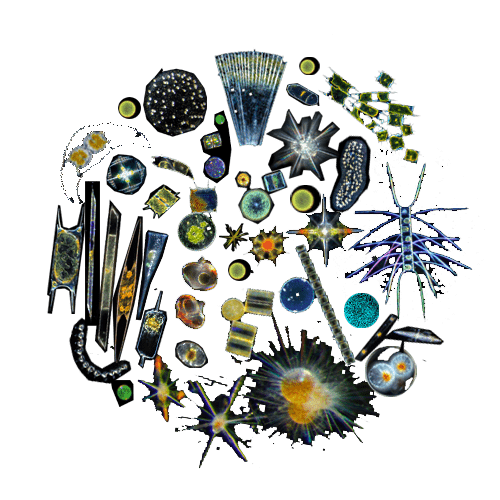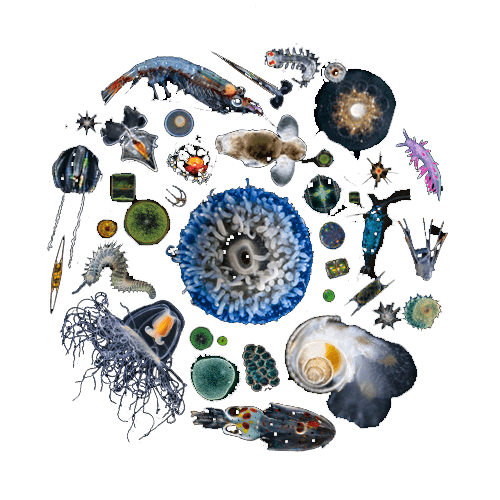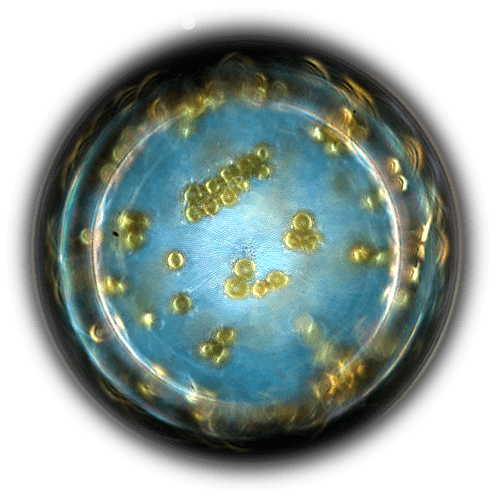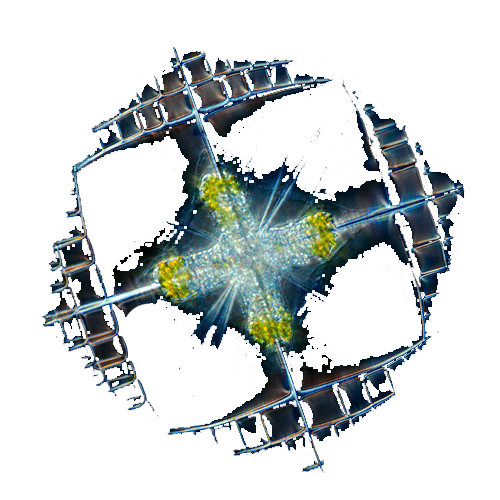In this episode
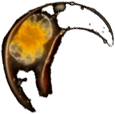 DinoflagellatePyrocystis elegans
DinoflagellatePyrocystis elegans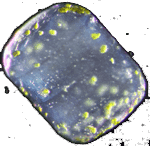 Centric diatom
Centric diatom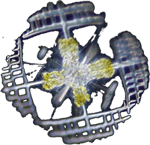 AcantharianLithoptera mulleri
AcantharianLithoptera mulleri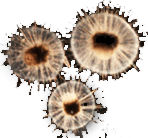 RadiolarianAulacantha scolymantha
RadiolarianAulacantha scolymantha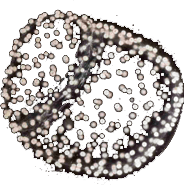 RadiolarianCollozum inerme
RadiolarianCollozum inerme
Photos
Narration
Ceratium ranipes belongs to the large family of dinoflagellates— single-celled protists equipped with two propelling flagella. Its unique shape is easily recognizable. Like other protists, ceratium transforms the sun’s energy into food through photosynthesis, using chloroplasts to make sugars.
Chloroplasts are microscopic, solar-powered factories containing chlorophyll, a green pigment that captures sunlight. The cell and its chloroplasts produce oxygen and convert carbon dioxide into organic compounds.
Ceratium are highly adaptable. At dawn, they grow fingers packed with chloroplasts to capture more light. When light vanishes, the fingers retract. This unique feature allows ceratium to sink in the dark or float to the surface to catch more light.
Share this on
Production
CNRS
Original Idea
Christian Sardet
Director
Sharif Mirshak
Scientific consultant
John Dolan
Texts
Christian Sardet
Images
Christian Sardet, Sharif Mirshak, Noé Sardet
Editing
Sharif Mirshak
Sound mix
Sharif Mirshak
Voice
Gregory Gallagher
Sound Engineer
Sharif Mirshak
Creative Commons Licence :
Attribution Non-Commercial
No Derivative

